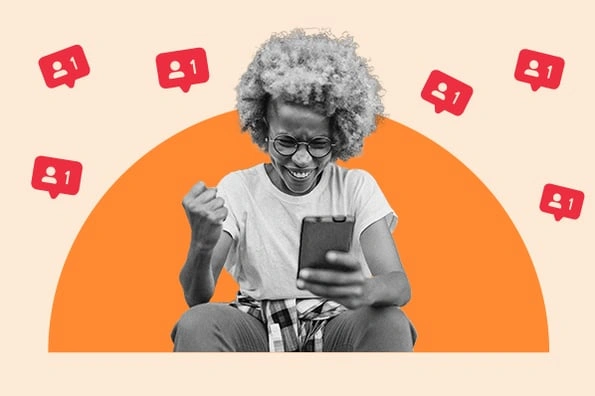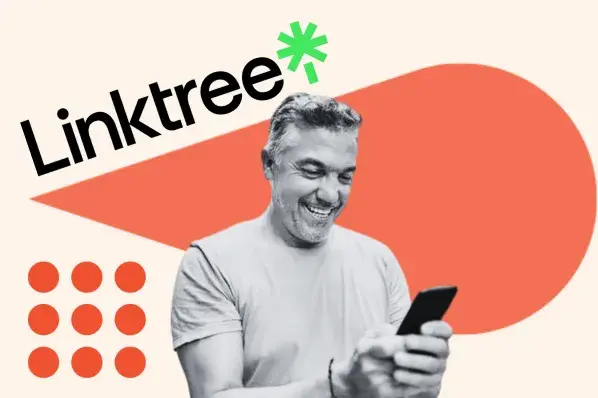Gone almost as fast as it was introduced — Instagram’s full-screen video feed proposal has been retired.

Earlier this summer, Instagram revealed plans to test out a new full-screen mode for its feed and an updated navigation bar, hoping to make content on the platform more immersive than its signature, scrollable picture feed.
This decision was congruent with the company's stated goal of making its competition with TikTok a major priority, as the appeal of TikTok lies within its fullscreen randomized video feed, intuitive algorithm, and easy to navigate UX.

To rival their competitor in the form of mimicry entailed putting more reels and suggested content into the feeds of Instagram users, and to put more an emphasis on video content as opposed to stills.
Michael Sayman, a former software engineer with experience working in Facebook, Google and Twitter says, "Everyone's eyes are glued to TikTok and the way it works right now," in regard to the way it's won over younger age demographics.
Instagram knew their target demographic was primarily Millennials; roughly 31% of global Instagram audiences were aged between 25 and 34 years.
TikTok, on the other hand, has amassed a massive following of Gen X and Gen Z; 25% aged between 10 to 19 years, and 22% to users aged between 20 and 29. Instagram wanted to tap into the success garnered from younger audiences as TikTok grew exponentially in 2021, generating $4.6 billion, a 142% increase year-on-year.
Why did Instagram walk back its plans?
Any social media marketer can tell you that a successful brand needs to be adaptable and reflect changes in user behavior, but this constant need for innovation can be met with huge success, or a PR blunder. Instagram experienced the latter.
Outcry of dismay came from viral infographics in the Instagram app and seeped out into competitor platforms from users upset at the announcement.
The most viral calls for Instagram to cancel its plans were in the form of a Change.org petition titled, “MAKE INSTAGRAM INSTAGRAM AGAIN.” That was even endorsed by the likes of celebrities such as Kylie Jenner who've amassed over 300 million followers on the platform.

I can only imagine the panic that Instagram’s marketing team had gone through after the announcement as a marketer myself, but I can see why it played out the way it did. There were many factors that could have led to this eruption of emotion at the company’s announcement.
Why Instagrammers Don't Want the Full Screen
Social media users don’t necessarily dislike viewing fullscreen content. If that was the case then TikTok wouldn't have amounted to over one billion monthly active users.
What really makes people dislike the full-screen UX change is that it takes away what they enjoy most from the app — its originality and the nostalgia its user base loves is something that they don’t want to fade away.
Instagram's current feed draws in consumers differently from competitors because it’s:
- More intimate and than fleeting or short tweets on Twitter
- A “cooler” social space to connect with friends, family and creators than Facebook
- More diverse active users with longer-lasting content than Snapchat
- Isn’t exclusionary like Clubhouse
The further it strays from its original mission and vision, especially with previous editions like shopping features and reels, the less users will actually derive value or emotional attachment to the platform they know and love.
.webp?width=959&height=474&name=tweet-1556269390026473475%20(1).webp)
What Brands Can Learn
The fact that Instagram learned from its mistake and rolled back its planned feed changes is a teachable moment for marketers and brands looking to avoid this type of uproar.
1. Run major UX changes by your audiences.
Your biggest asset as a social media channel is your users. They’re the ones that drive your relevance, produce content that reel in more sign-ups, and make your platform worth visiting — so why would you exclude them from the conversation?
Your audience knows and uses your platform on a daily basis, so when you prepare soft-launch UX changes, let them know. Notify your audience of what’s to come and give them the ability to chime in, this is known as social listening and has the potential to increase your company’s longevity if you can keep them satisfied.
2. Understand what your audience wants from you.
One of the most prevalent complaints I’ve seen through the past few years on social media channels like Twitter, TikTok, and Instagram is that the new updates in UX/UI are usually never the ones users are actively asking for.
Coming from my own experience online, I’ve found that the most common gripes social media users have shared is their disinterest in changes that no one’s really asked for.
For years, the two most talked about demands have been for Instagram to:
- Prioritize chronological timelines over suggested feed
- Revert the algorithm to prioritize photos
And while not every request is feasible, or necessarily in the vision of the brand’s future, understanding the want and needs of the people using your product or service is necessary for continued growth and improvement.
3. Identify where to innovate rather than compete.
Brands have to learn how to do more than just mimic to establish market dominance, and that can manifest from refocusing on innovation.
Re-centering strategy on more in-depth market research and exploring ideas that haven’t already been done can be a challenge, especially when the dta isn’t already there to back up on its success, but it’s worth trying if you invest the time and effort to figure out what’ll take the digital world by storm.
4. Learn when and how to pivot.
Effective and organized change management is an important part of any growing or evolving company.
As marketers, our job is to make the brand image shine with each and every addition, change or innovation your brand executes. But in the case of an abandoned idea, you’ve got to work against the clock to refocus on the next best thing.
Marketing is a constant experiment with never ending variables, so prioritize on adapting with those variables as they come.
What's Next For Instagram?
In July, Instagram Head Adam Mosseri wrote, “Now, I want to be clear: We're going to continue to support photos—it's part of our heritage, you know, I love photos; I know a lot of you out there love photos too. That said, I need to be honest—I do believe that more and more of Instagram is going to become video over time."
"We see this even if we change nothing. We see this even if you just look at the chronological feed," he added. "If you look at what people share on Instagram, that's shifting more and more to videos overtime. If you look at what people like and consume and view on Instagram, that's also shifting more and more to video over time, even when we stop changing anything. So, we're going to have to lean into that shift while continuing to support photos.”
From this message alone — it’s safe to say that Instagram isn’t going to shy away from change. As one of the largest social media platforms, it has a lot at stake if it becomes too stale or stagnant, but also has just as much to lose if it fails to keep its charm.
And as fast as the company was to implement and cancel TikTok-like video feed plans, it seems they’re already in the works of adding new challenge-like features against even newer competitors like BeReal.
Wherever Instagram's headed, I hope its team takes heed from users and keeps a healthy balance between active listening and innovating.
![New Data: Instagram Engagement Report [Free Download]](https://no-cache.hubspot.com/cta/default/53/9294dd33-9827-4b39-8fc2-b7fbece7fdb9.png)


![How to Get Sponsored on Instagram [What 500+ Social Media Marketers Are Looking For]](https://www.hubspot.com/hubfs/paid%20partnership%20instagram.png)
![When Is the Best Time to Post on Instagram in 2024? [Cheat Sheet]](https://www.hubspot.com/hubfs/best-time-to-post-on-instagram-3.jpg)
![How to Use Instagram: A Beginner's Guide [Expert Insights + New Data]](https://www.hubspot.com/hubfs/how-to-use-instagram_0.webp)



![How to Post to Instagram From Your Computer [12 Easy Steps]](https://www.hubspot.com/hubfs/how-to-post-to-instagram-from-your-computer.jpeg)

